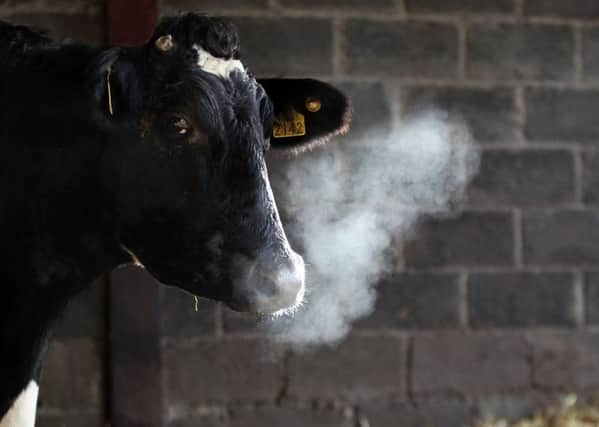Managing the dry period


This is not best practice.
Whilst less disease tends to occur during the dry period, the manner in which these cows are managed can either predispose them to developing problems or reduce the chances of sickness occurring after calving.
Why dry off?
The timing of the dry period on some farms is a lifestyle choice allowing for a break from the milking routine. Servicing and repair of the milking equipment can be carried out during this time. It can be a time to partly address cow body condition variations. The ideal body condition score for dairy cows is 3.0 - 3.25. Thin dry cows can struggle to produce adequate quantities of milk after calving and subsequent fertility can be problematic. Fat dry cows are predisposed to a range of metabolic disease after calving including milk fever, Type 1 and Type 11 ketosis, displaced abomasum, uterine infections and impaired fertility. It is recommended that cows are dried off at the body condition score at which they will be at calving to reduce the risk of metabolic and health issues after calving. The dry period is also a suitable time for routine treatments including lameness assessment and foot trimming and pre-calving immunisation e.g. vaccination to help control calf scour, or administering Bovilis® IBR Marker Live to boost herd protection against IBR. Liver fluke treatments are often given at this time as it allows for an adequate milk withdrawal period. Ensure flukicide product selection takes into account efficacy against immature or mature stages, and the time of year and length of time since housing. Importantly the dry period is a useful and effective time in which to treat existing udder infections. Long-acting antibiotics used at dry off are not being milked out - hence they can persist throughout the dry period, depending on the chosen product.
Opportunity to protect against infection
Advertisement
Hide AdAdvertisement
Hide AdDry cow antibiotic treatments can treat existing udder infections, prevent new infections occurring during this time and one product, containing Cephalonium, is also licensed to reduce somatic cell counts (SCC). Dry off should be an abrupt cessation of milking. Susceptibility of the cow’s udder to infection during the dry period is considered to be greatest in the days after drying off and in the three weeks before calving. To protect the udder from infections, it is important that the antibiotics from the dry cow treatment persist and that concentrations in the udder are still at effective levels during the last days of the dry period. Some flexibility is required when drying off batches of cows, as calving dates may be inaccurate, and protection against infection is essential throughout the entire dry period; hence seek veterinary advice regarding the most suitable product to select. Teat sealants can provide added protection against environmental mastitis pathogens entering the udder during the dry period and should be used in conjunction with antibiotic intramammary tubes on most farms.
Dry cow treatment should be planned and efficacy monitored. A minimum 60 day dry period aids in the maximisation of milk yield in subsequent lactations particularly in heifers entering their second lactation. Maintaining a low SCC in the second and subsequent lactations is preferable. Low bulk tank SCC levels during the first month after calving correlate to low levels in the rest of the lactation.
Dry cow housing requirements
Feed space of at least 75 cm per cow is advised in the dry period with free access to clean drinking water (10 cm trough space per cow). Dry cow housing should be clean and comfortable with adequate space providing 10% extra cubicles or cow spaces than actual cow numbers housed in that area.
Dry off check list
l Aim to dry off cows at a BCS of 3 - 3.25
l Milk out cows thoroughly before commencing dry off procedure
Advertisement
Hide AdAdvertisement
Hide Adl Clean teats and administer dry cow intramammary tubes in an aseptic manner
l Do not trim feet at the same time as administering dry cow treatments due to the risk of instilling contaminants into the udder
l Apply teat dip to the entire teat after drying off and for two weeks thereafter. Aim to apply teat dip during the two weeks prior to calving also
l Ensure housing meets accepted requirements
l Monitor for signs of mastitis regularly during the dry period
l Monitor for BCS changes throughout the dry period
Advertisement
Hide AdAdvertisement
Hide Adl Consider administering a flukicide dose effective against immature liver fluke stages e.g. triclabendazole at dry off. A flukicide dose effective against adult liver fluke should then be administered around calving e.g. Zanil which requires a three day milk withdrawal